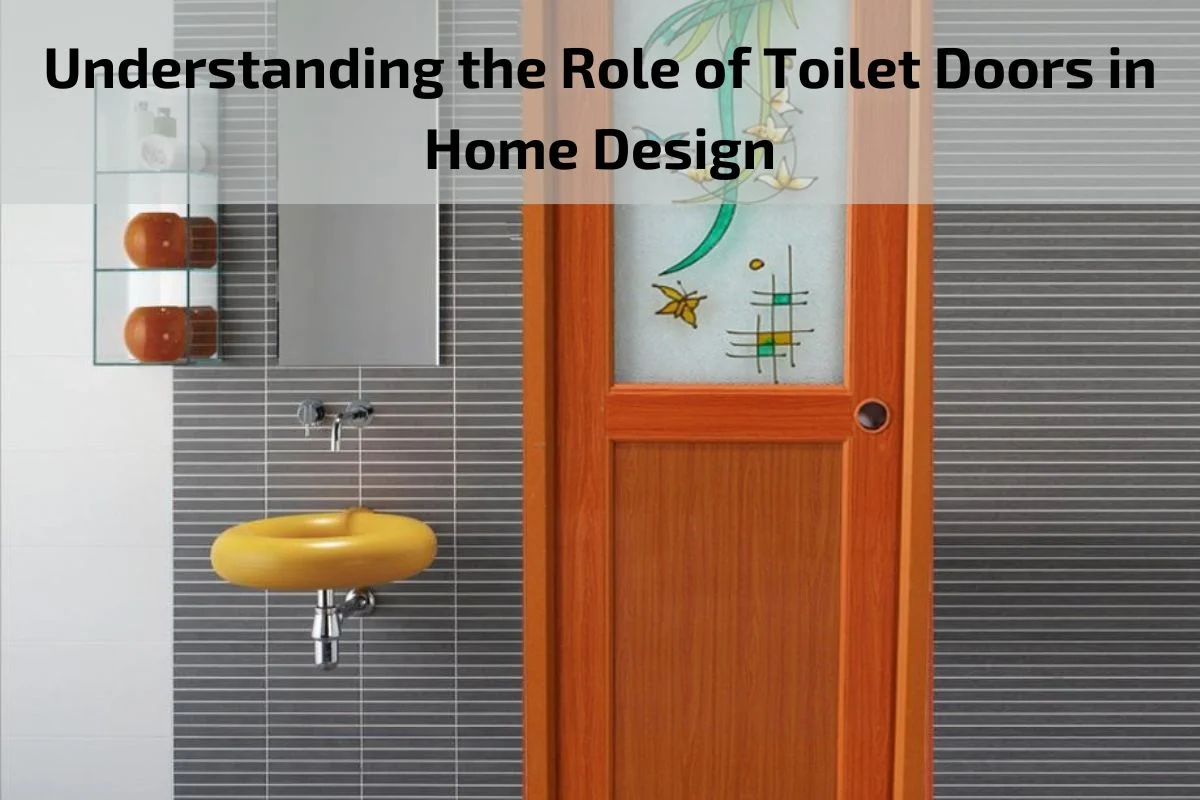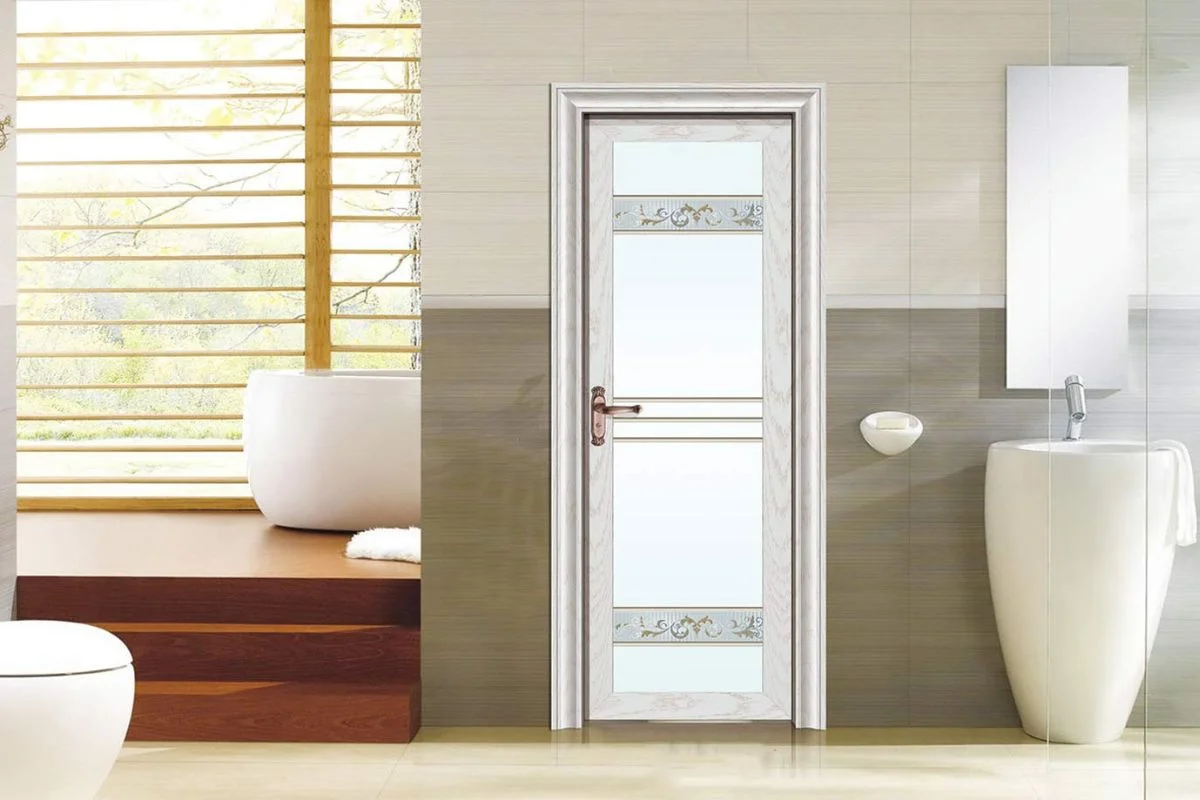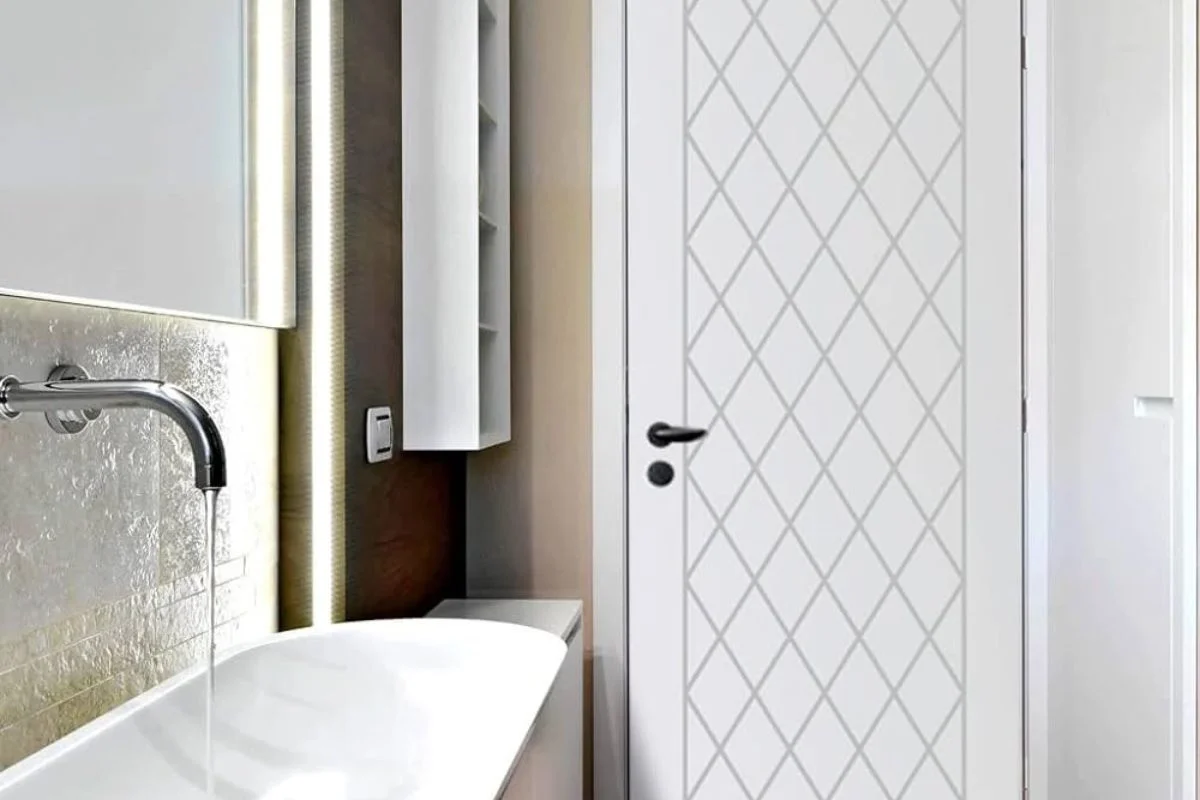
Toilet doors, often overlooked in the realm of home design, play a crucial role in shaping the functionality, privacy, and aesthetics of any living space. While they may seem like mundane fixtures, the selection and placement of toilet doors can significantly impact the overall design and ambiance of a home.
In this article, we delve into the importance of understanding the role of toilet doors in home design. From their practical functions to their aesthetic contributions, toilet doors serve as essential elements that deserve careful consideration and attention.
Beyond simply providing a barrier between spaces, toilet doors contribute to the overall comfort, convenience, and harmony of a home environment. Whether in a private residence or a commercial setting, the proper design and placement of toilet doors can enhance the functionality of the space while adding to its visual appeal.
Importance of Toilet Doors in Home Design
Toilet doors might appear inconspicuous amidst the broader canvas of home design, yet they hold significant importance in shaping the functionality, privacy, and aesthetics of a living space. Here’s a closer look at why toilet doors are integral components of home design:
Privacy and Enclosure: One of the primary functions of toilet doors is to provide privacy and enclosure within the home. They create a physical barrier between the toilet space and the rest of the living area, ensuring individuals feel comfortable and secure while using the facilities.
Hygiene and Odor Control: Toilet doors help contain odors and maintain hygiene levels within the bathroom area. By closing the door, occupants can prevent unpleasant odors and germs from spreading to other parts of the house, thereby ensuring a clean and sanitary living environment.
Enhanced Living Experience: In homes with multiple occupants or shared living spaces, toilet doors contribute to a harmonious living experience by allowing individuals to enjoy personal space and privacy. They facilitate cohabitation by providing designated areas for personal hygiene and grooming activities.
Aesthetic Appeal: Beyond their functional aspects, toilet doors also contribute to the overall aesthetics of a home’s interior design. They come in various styles, materials, and finishes, allowing homeowners to customize their appearance to match the overall decor theme and architectural style of the house.
Space Optimization: In smaller homes or apartments where space is limited, toilet doors play a crucial role in optimizing the use of available space. Sliding doors, pocket doors, or bi-fold doors can be excellent space-saving solutions, allowing for efficient utilization of floor space without compromising functionality.
Sound Insulation: Toilet doors help minimize noise transmission between different areas of the house, ensuring privacy and tranquility for occupants. Soundproofing features in certain types of toilet doors can effectively reduce noise levels, creating a peaceful and comfortable living environment.
Understanding the Role of Toilet Doors
Toilet doors serve as fundamental components within residential and commercial spaces, playing multifaceted roles that extend beyond mere physical barriers. Here’s a deeper exploration of the various aspects that contribute to understanding the significance of toilet doors:
Privacy and Enclosure: Primarily, toilet doors provide privacy and enclosure, allowing individuals to engage in personal hygiene activities without the intrusion of others. They create a designated space where occupants can feel comfortable and secure, away from the prying eyes of visitors or other members of the household.
Hygiene and Cleanliness: Toilet doors contribute to maintaining cleanliness and hygiene within the bathroom environment. By closing the door, odors and germs are contained within the enclosed space, preventing them from spreading to other areas of the living or working environment. This containment helps promote a sanitary atmosphere and reduces the risk of cross-contamination.
Acoustic Isolation: Another vital function of toilet doors is to provide acoustic isolation, minimizing the transmission of sound between the bathroom and adjoining rooms. Effective soundproofing features in certain types of toilet doors help maintain tranquility and privacy within the household, particularly in shared living spaces or multi-occupancy environments.
Aesthetic Enhancement: Beyond their practical functions, toilet doors contribute to the overall aesthetic appeal of interior spaces. They come in a variety of styles, materials, and finishes, allowing for customization to match the existing decor and architectural elements of the surrounding environment. Toilet doors can serve as design focal points or seamlessly blend into the overall aesthetic scheme, enhancing the visual harmony of the space.
Space Optimization: In environments where space is at a premium, such as compact apartments or commercial establishments, toilet doors play a crucial role in space optimization. Sliding doors, pocket doors, or bi-fold doors offer space-saving alternatives to traditional hinged doors, allowing for efficient utilization of available floor space without sacrificing functionality or privacy.
Functional Integration: Toilet doors are designed to integrate seamlessly with other fixtures and elements within the bathroom environment. They provide ease of access and operation while accommodating hardware such as door handles, locks, hinges, and accessories that enhance functionality and convenience for users.
Types of Toilet Doors
Toilet doors come in various types and styles, each offering unique features and benefits to suit different design preferences and space requirements. Here’s an overview of the most common types of toilet doors:
Hinged Doors: Hinged doors are the most traditional and widely used type of toilet doors. They swing open and closed on hinges attached to one side of the door frame. Hinged doors come in various materials, such as wood, metal, or composite materials, and can be customized with different finishes and hardware options.
Sliding Doors: Sliding doors are an excellent space-saving solution for smaller bathrooms or areas with limited floor space. Instead of swinging open, sliding doors move horizontally along a track mounted above the doorway. Sliding doors offer smooth operation and can be made from materials like glass, wood, or aluminum, providing a modern and streamlined look to the bathroom space.
Pocket Doors: Pocket doors are similar to sliding doors but slide into a recessed pocket within the wall when opened, completely disappearing from view. Pocket doors are ideal for maximizing space and creating a seamless transition between rooms. They are commonly used in bathrooms where space is at a premium and traditional swinging doors may be impractical.
Bi-fold Doors: Bi-fold doors consist of two panels that fold in the middle when opened, allowing for a compact and space-efficient design. Bi-fold doors are popular for closet doors and pantry doors, but they can also be used for toilet doors in bathrooms with limited space. They offer easy access and can be customized with various materials and finishes to complement the overall decor.
Barn Doors: Barn doors add rustic charm and character to any space, including bathrooms. Inspired by traditional farm-style doors, barn doors slide along a track mounted above the doorway, offering a unique and visually striking design element. Barn doors are available in a variety of materials, including reclaimed wood, metal, and glass, making them a versatile choice for toilet doors in modern and eclectic interiors.
Factors to Consider When Choosing Toilet Doors
Selecting the right toilet door involves careful consideration of various factors to ensure optimal functionality, aesthetics, and suitability for the intended space. Here are key factors to keep in mind when choosing toilet doors:
Material Options: Toilet doors are available in a range of materials, including wood, metal, glass, PVC, and composite materials. Consider the durability, maintenance requirements, and aesthetic appeal of each material option to determine the best fit for your bathroom space.
Design and Style: Choose a door design and style that complements the overall aesthetic of your home or bathroom decor. Whether you prefer a traditional look with paneling and molding or a sleek, contemporary design with clean lines and minimalist hardware, select a style that reflects your personal taste and complements the existing interior design scheme.
Size and Space Constraints: Consider the dimensions of the bathroom space and the available clearance for door swing or sliding motion. Ensure that the selected door size and type can be accommodated within the allocated space without obstructing other fixtures or pathways.
Privacy Requirements: Evaluate the level of privacy needed for the bathroom space. Solid doors with no gaps or louvers provide maximum privacy, while frosted or textured glass doors offer partial privacy while allowing natural light to filter through. Consider the preferences and needs of household members when selecting the level of privacy desired.
Budget Considerations: Set a budget for your toilet door project and explore options within your price range. Compare costs for different materials, designs, and features to find a door that offers the best value without compromising on quality or functionality.
Hardware and Accessories: Choose door hardware and accessories that complement the selected door style and enhance functionality. Consider factors such as door handles, locks, hinges, and tracks for sliding doors, ensuring they are durable, easy to operate, and compatible with the chosen door type.
Maintenance Requirements: Take into account the maintenance needs of the chosen door material and design. Some materials may require regular cleaning, sealing, or refinishing to maintain their appearance and structural integrity. Choose a door option that fits your maintenance preferences and lifestyle.
Environmental Considerations: Consider eco-friendly and sustainable options for toilet doors, such as reclaimed wood or recycled materials, to minimize environmental impact and promote sustainability in your home design choices.
Maintenance Guide for Toilet Doors
Proper maintenance is essential to ensure that toilet doors remain functional, attractive, and durable over time. Here are some maintenance tips to keep your toilet doors in top condition:
Regular Cleaning: Clean the surfaces of the toilet door regularly to remove dust, dirt, and grime buildup. Use a mild detergent or soap solution and a soft cloth to wipe down the door panels, frames, and hardware. Avoid using abrasive cleaners or harsh chemicals that may damage the door finish.
Inspect for Damage: Periodically inspect the toilet door for any signs of damage, such as cracks, chips, or warping. Address any issues promptly to prevent further deterioration and maintain the structural integrity of the door.
Lubricate Moving Parts: Apply lubricant to the hinges, tracks, and other moving parts of the toilet door to ensure smooth operation. Use a silicone-based lubricant or graphite powder to reduce friction and prevent squeaking or sticking.
Check and Tighten Hardware: Regularly check the door handles, locks, hinges, and screws for looseness or signs of wear. Tighten any loose hardware and replace damaged or missing screws as needed to maintain the security and functionality of the door.
Repair Minor Damage: Repair minor damage to the toilet door, such as scratches or dents, using appropriate repair products or techniques. Fill in scratches with wood filler or touch-up paint for wooden doors, or use filler and sandpaper for metal or composite doors. Follow manufacturer instructions for best results.
Protect Against Moisture: Ensure that toilet doors are properly sealed and protected against moisture, especially in humid environments such as bathrooms. Consider applying a sealant or water-resistant finish to wooden doors to prevent warping, swelling, or rotting due to prolonged exposure to moisture.
Maintain Glass Doors: If your toilet door features glass panels, clean them regularly with a glass cleaner to remove smudges, fingerprints, and water spots. Use a microfiber cloth or newspaper for streak-free cleaning and avoid abrasive materials that may scratch the glass surface.
Preventive Measures: Take preventive measures to protect toilet doors from damage and wear. Avoid slamming or forcefully closing the door, as this can cause stress on the hinges and hardware. Use door stops or cushions to prevent the door from banging against walls or furniture.
Conclusion
In conclusion, toilet doors play a crucial role in the functionality, privacy, and aesthetic appeal of any bathroom space. They provide essential privacy and enclosure while contributing to the overall design and ambiance of the home. Understanding the various types, materials, and factors to consider when choosing toilet doors is essential for making informed decisions that align with individual preferences and space requirements.


